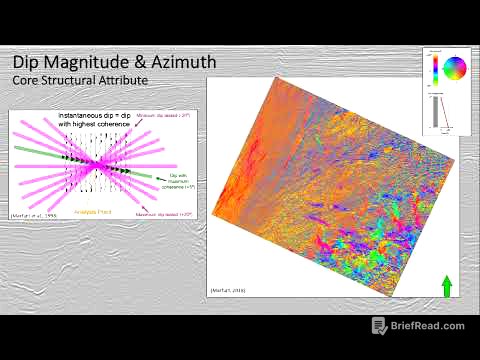TLDR;
This lecture covers Earth's movements, geography, and related phenomena. It begins by addressing administrative questions about class timings and access to free content. The lecture then transitions into a detailed discussion about the Earth's shape, age, and movements, including rotation and revolution, and their effects on seasons, day and night, and climate. It also covers latitude and longitude, eclipses, tides, and related concepts, providing explanations and answering questions from viewers.
- Earth's age and shape
- Latitude and Longitude
- Eclipses and Tides
Introduction [0:21]
The lecture begins with a greeting and confirmation that the audio is working correctly. The speaker announces that the session will cover latitude, longitude, rotation, and revolution. Class timings will remain the same, from Monday to Friday at 10:00 AM. A previous announcement video contains more details.
Revising Previous Lecture [2:22]
The speaker asks questions from the previous lecture to test the audience's understanding, including identifying the windiest planet (Neptune), a dwarf planet with a 310-315 year revolution period (MakeMake), the dwarf planet nearest to Earth (Ceres), and the planet with the shortest rotation time (Jupiter). The lecture will cover the reasons for seasons and other related topics.
Age of the Earth [4:42]
The age of the Earth is discussed, referencing the Nebular Laplace theory, which explains the evolution of the solar system from a rotating cloud of dust and gases. The Earth is approximately 4.5 billion years old, determined through radioactive dating of rocks and meteorites. Carbon-14 dating is mentioned as a method for determining age.
Shape of the Earth [7:02]
The Earth's shape is not a perfect sphere but an average with mountains, plateaus, valleys, and trenches. The Earth bulges at the equator and is flattened at the poles. The equatorial radius is larger than the polar radius. The Earth's equatorial speed is higher than its polar speed due to the greater distance at the equator. The Earth's rotation causes a centrifugal force, leading to the bulge at the equator. The shape is described as a geoid.
Rotation and its Effects [13:00]
The Earth's rotation causes day and night, with one rotation taking approximately 23 hours, 56 minutes, and 4 seconds. The centrifugal force due to rotation causes the Earth to bulge at the equator.
Inclination of Earth's Axis [17:36]
The Earth is tilted on its axis at 23.5 degrees, which plays a significant role in seasons. Uranus is called a rolling planet because its tilt is more than 90 degrees. The Earth's tilt is believed to be due to a past asteroid impact. The orbital plane is inclined at 66.5 degrees.
Latitude [21:29]
Latitude refers to imaginary horizontal lines on the globe running from east to west, used to specify locations. It measures the angular distance of a place from the equator. The distance between each degree of latitude is 111 km. There are 181 total latitudes, but only 179 latitudinal circles, as the poles are points. The Northern Hemisphere is above the equator, and the Southern Hemisphere is below.
Important Latitudes and Zones [27:46]
Key latitudes include the Equator (0°), Tropic of Cancer (23.5° N), Tropic of Capricorn (23.5° S), Arctic Circle (66.5° N), and Antarctic Circle (66.5° S). The sun's direct rays fall between the Tropic of Cancer and Tropic of Capricorn. The region between these tropics is called the torrid zone. Temperate zones lie between the tropics and the Arctic/Antarctic Circles, while frigid zones are beyond these circles. The largest latitude is the Equator.
Longitude [32:00]
Longitude consists of imaginary vertical lines running north-south. The distance between longitudes varies, being maximum at the equator and zero at the poles. There are 360 longitudes. The Prime Meridian (Greenwich Mean Time) is the reference line.
Prime Meridian and International Date Line [35:10]
The Prime Meridian passes through the Greenwich Laboratory in London. The International Date Line is 180 degrees from the Prime Meridian. The Prime Meridian passes through eight countries: Burkina Faso, Spain, France, Ghana, Algeria, Mali, Togo, and the United Kingdom.
Longitude and Time Calculation [39:08]
The lecture explains how longitude is used to calculate time. The Earth rotates 15 degrees per hour, meaning 1 degree equals 4 minutes. Moving east from the Prime Meridian adds time, while moving west subtracts time. Indian Standard Time is 5.5 hours ahead of Greenwich Mean Time.
International Date Line (IDL) [46:56]
Crossing the International Date Line from west to east results in gaining a day, while crossing from east to west results in losing a day. The IDL is a zig-zag line to avoid confusion on land masses.
Great Circles [51:47]
A great circle divides the Earth into two equal parts. All longitudes are great circles, but only the Equator is a great circle among latitudes. Great circles represent the shortest distance between two points on Earth.
Hemispheres [57:27]
The Equator divides the Earth into the Northern and Southern Hemispheres, while the Prime Meridian divides it into the Eastern and Western Hemispheres.
Revolution and Seasons [59:45]
The Earth revolves around the sun in an elliptical orbit, taking approximately 365 days, 6 hours, and 9 minutes. This revolution, combined with the Earth's tilt, causes seasons. The lecture explains the positions of the Earth during the Summer Solstice (June 21), Winter Solstice (December 22), Spring Equinox (March 21), and Autumn Equinox (September 23).
Perihelion and Aphelion [1:17:59]
Perihelion is when the Earth is closest to the sun (around January 3), and aphelion is when it is farthest (around July 4). The distances are approximately 147 million km and 152 million km, respectively. The moon also has perigee (closest) and apogee (farthest) points in its orbit around the Earth.
Eclipses [1:21:43]
A solar eclipse occurs when the Moon comes between the Sun and the Earth, while a lunar eclipse occurs when the Earth comes between the Sun and the Moon. Solar eclipses happen during the New Moon, and lunar eclipses happen during the Full Moon.
New Moon and Full Moon [1:23:26]
The lecture explains why the full moon is visible and why the new moon is not. It also mentions the Chandrayaan mission and the landing point named Shiv Shakti.
Partial, Total, Super, Blood, and Blue Moons [1:28:06]
The lecture describes partial and total solar eclipses. A Blood Moon occurs during a lunar eclipse when the moon appears red due to Rayleigh scattering. A Super Moon occurs when the moon is at perigee, appearing larger. A Blue Moon is when there are two full moons in one month.
Tides [1:32:09]
Tides are the rise and fall of sea water levels, primarily caused by the Moon's gravitational pull. High tide occurs when water rises, and low tide occurs when it falls.
Spring and Neap Tides [1:36:24]
Spring tides occur when the Sun, Earth, and Moon are aligned (in syzygy), resulting in higher high tides and lower low tides. Neap tides occur when the Sun, Earth, and Moon form a 90-degree angle, resulting in less extreme tides.
Tidal Energy and Review [1:44:40]
Tidal energy can be harnessed in areas with significant tidal ranges, such as the Gulf of Kutch and the Gulf of Khambhat in India. The lecture concludes with a review of key concepts and a Q&A session.
Questions and Answers [1:45:32]
The speaker answers various questions from the audience, covering topics such as the shape of the Earth, light years, perihelion, the reason for hotter temperatures near the equator, gravity, the Moon's orbit, solar eclipses, and the International Space Station's orbit.
Additional Questions and Closing Remarks [1:59:10]
The speaker addresses queries about class schedules, free content, and the sufficiency of the material for various exams. The lecture concludes with a thank you and an announcement of the next session's topic: the Earth's interior and plate tectonics.









